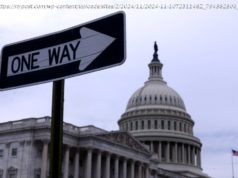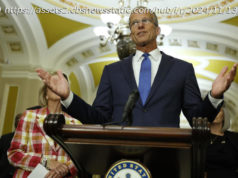Leaders from both parties have reached an agreement.
America is a little closer to averting a self-imposed economic crisis.
President Biden and Speaker Kevin McCarthy, the Republican House leader, announced yesterday that they had reached a deal to increase the amount of money the government can borrow. The deal includes caps on federal spending, additional work requirements for food stamps and welfare, and reforms to build energy projects more quickly. Altogether, it is the kind of spending deal that Democrats and Republicans have agreed to multiple times over the past few decades.
But the agreement is remarkable because of how close the country has come to calamity this time. The Treasury Department has warned that the U.S. will run out of money as early as June 5 — in just a few days. At that point, the federal government could be forced to default on its debts, potentially setting off a global financial crisis (as this newsletter has explained).
The bill’s passage in Congress is not guaranteed. Today’s newsletter will explain the deal struck by Biden and McCarthy — and the main thing that could still go wrong.A bipartisan deal
The final agreement is a compromise. Many Republicans wanted steeper cuts, and many Democrats wanted no cuts. The deal landed in between. “I don’t think everybody is going to be happy at the end of the day,” McCarthy said on Thursday. “That’s not how this system works.”
First, the deal would raise the debt limit for two years. This moves any future debt limit fight to after the 2024 election.
The spending caps at the center of the agreement target federal programs besides Social Security, Medicare, Medicaid and the military — such as education, scientific research and border security. The caps would not actually reduce spending, but aim to make it grow more slowly than inflation and the economy. This arrangement lets both sides claim a win of sorts: Republicans can call it a spending cut, since spending will grow more slowly than it might have otherwise. And Democrats can say they prevented actual cuts.
The deal would also claw back some of the funds previously allocated to the Internal Revenue Service to crack down on rich tax cheats. Under the deal, some of the I.R.S. funds could be used to mitigate other spending cuts. That reflects the bipartisan nature of the talks, with both sides getting wins: Republicans get to claim they successfully cut I.R.S. funding, and Democrats get to use the money to soften other cuts they never wanted.
Similarly, the permitting reforms in the deal could enable more clean energy projects, a Democratic priority, but also more oil and gas projects, which Republicans favor.One last hurdle
The big question now: Will the deal pass? The right flank of the House Republicans has a big say. Those lawmakers have a history of doing everything they can to block spending deals they disapprove of. They could do so again, and they have sufficient power to kill the deal because McCarthy has only a nine-vote majority.
McCarthy has tried to avoid a mutiny by involving some of the most conservative members in debt limit talks and putting them in leadership positions.






